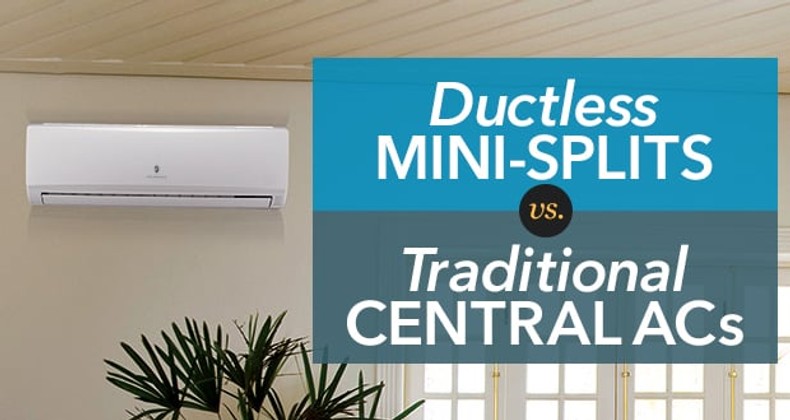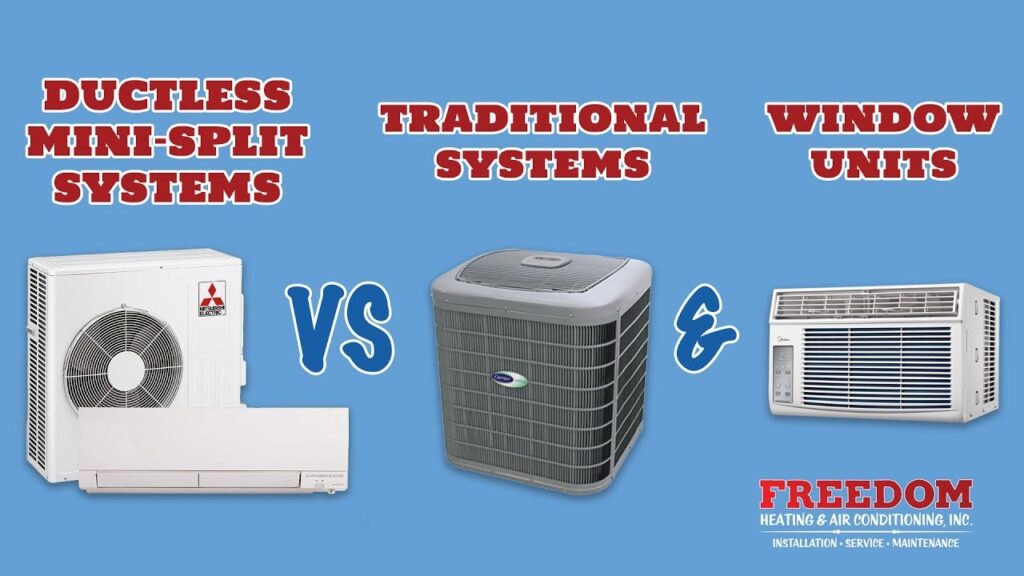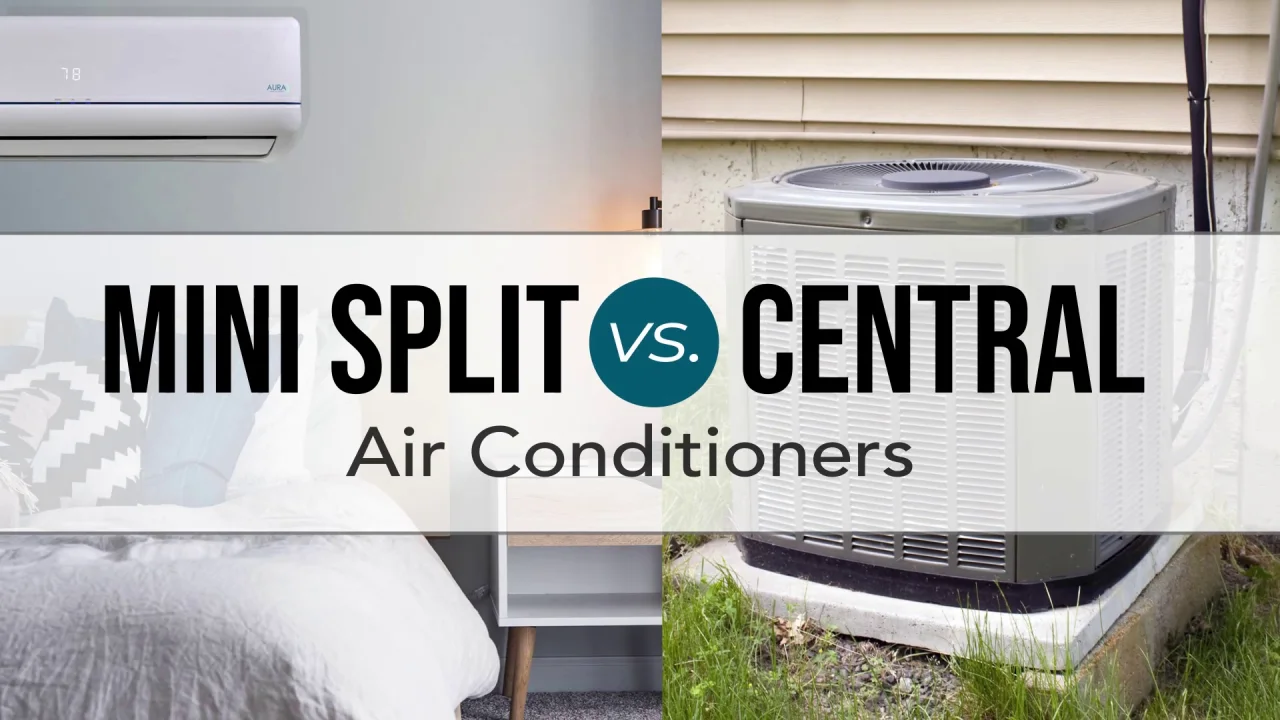Imagine having the perfect temperature in every room of your home without the hassle of bulky and outdated traditional AC units. With the latest innovation in cooling technology, ductless mini split systems offer a host of benefits that will revolutionize the way you keep your home comfortable. From energy efficiency and cost savings to easy installation and versatile temperature control, these compact units are an ideal solution for any living space. Say goodbye to hot and stuffy rooms, and say hello to a more efficient and personalized cooling experience with ductless mini split systems!
Understanding the Basics of Ductless Mini Split Systems
Definition of Ductless Mini Split Systems
Ductless mini split systems, also known as ductless heat pumps or ductless air conditioners, are heating and cooling systems that provide efficient temperature control without the need for ductwork. Unlike traditional AC units, which rely on a network of ducts to distribute conditioned air, ductless mini splits consist of an outdoor unit that connects to one or more indoor units via refrigerant lines. These indoor units, often mounted on walls or ceilings, are responsible for delivering conditioned air directly into specific areas or zones of a building.
Components of Ductless Mini Split Systems
Ductless mini split systems consist of several key components that work together to provide efficient heating and cooling. The outdoor unit houses the compressor, condenser, and expansion valve, which are responsible for the refrigeration cycle that cools or heats the air. The indoor units, often referred to as air handlers, include the evaporator coil, fan, and air filter. These components ensure the conditioned air is delivered effectively and efficiently within each zone. Additionally, refrigerant lines and electrical wiring connect the outdoor and indoor units, allowing for the transfer of heat or cooling energy.
How Ductless Mini Split Systems Work
Ductless mini split systems operate using the same principles as traditional AC units and heat pumps. The outdoor unit, containing the compressor and condenser, extracts heat from the air during cooling mode or absorbs heat from the outside during heating mode. This heat is carried by the refrigerant to the indoor units where it is released or absorbed, depending on the desired temperature. The conditioned air is then circulated into the designated zones. Each indoor unit can be controlled independently, allowing for customized temperature settings and increased energy efficiency.
Understanding the Basics of Traditional AC Units
Definition of Traditional AC Units
Traditional AC units, often referred to as central air conditioning systems, use a network of ducts to distribute conditioned air throughout a building. These units typically consist of an outdoor condenser unit and an indoor air handler or furnace. The air handler contains a blower fan and an evaporator coil where the heat exchange process occurs. Conditioned air is then pushed through the ductwork and distributed into various rooms or areas of the building.
Components of Traditional AC Units
Traditional AC units have similar components to ductless mini split systems, albeit with a different configuration. The outdoor unit houses the compressor and condenser, responsible for the refrigeration cycle that cools the air. The indoor air handler contains the blower fan, evaporator coil, and air filter, which work together to circulate and condition the air. Ductwork connects the indoor and outdoor units, providing a pathway for the conditioned air to reach different areas of the building.
Mechanism of a Traditional AC Unit
Traditional AC units operate by extracting heat from the air indoors and transferring it outdoors. The outdoor unit’s compressor and condenser facilitate the refrigeration cycle, which involves the compression and expansion of refrigerant to transfer heat. The cooled refrigerant then circulates to the indoor air handler, where it absorbs heat from the air passing over the evaporator coil. This process cools the air, which is then distributed through the ductwork and into the various rooms of the building.

This image is property of s3-assets.sylvane.com.
Energy Efficiency
Energy Consumption of Ductless Mini Split Systems
Ductless mini split systems are known for their energy efficiency, primarily due to their zoning capabilities. By allowing homeowners to independently control the temperature in different zones, these systems eliminate the need to cool or heat unused areas. This targeted approach reduces wasted energy and leads to significant energy savings. Additionally, ductless mini splits do not suffer from the energy loss associated with ductwork, which can account for up to 30% of energy consumption in traditional AC units.
Energy Consumption of Traditional AC Units
Traditional AC units rely on a central system to cool or heat the entire building, regardless of the individual temperature preferences in each room. This lack of zoning control results in energy wastage and higher energy consumption. Furthermore, traditional AC units with ductwork experience energy loss through leaks, uninsulated ducts, and inefficient airflow. These factors contribute to increased energy consumption and lower overall energy efficiency compared to ductless mini split systems.
Comparative Analysis of Energy Efficiency Between The Two Systems
When comparing the energy efficiency of ductless mini split systems and traditional AC units, the former often outperforms the latter. The ability to control temperature settings on a zone-by-zone basis allows ductless mini splits to save energy by only heating or cooling areas that are occupied. The absence of ductwork in ductless systems eliminates the energy losses commonly associated with central AC units. As a result, ductless mini splits offer superior energy efficiency, resulting in lower utility bills and reduced environmental impact.
Installation Process
Installation of Ductless Mini Split Systems
The installation process for ductless mini split systems typically involves mounting the indoor units on walls or ceilings, connecting them to the outdoor unit via refrigerant lines, and running electrical wiring. Professional installation is recommended to ensure proper sizing, placement, and connection of the units. The process generally requires minimal construction, making it less invasive and time-consuming compared to traditional AC unit installations. Additionally, the absence of ductwork simplifies the installation process, resulting in fewer disruptions and a quicker turnaround time.
Installation of Traditional AC Units
The installation of traditional AC units involves more extensive construction, primarily due to the installation of ductwork throughout the building. This process may require cutting holes in walls or ceilings to accommodate the ducts and positioning the outdoor condenser unit. The complexity of the installation, as well as the necessity for precise duct sizing and sealing, often requires professional assistance. The installation of ductwork can be disruptive, time-consuming, and costly, especially in existing buildings where retrofitting may be necessary.
Comparing the Installation Processes
In terms of installation, ductless mini split systems are generally easier and less invasive to install compared to traditional AC units. The absence of ductwork eliminates the need for extensive construction and reduces the overall installation time. Additionally, the ability to mount indoor units in various locations provides flexibility and customization options. Traditional AC units, on the other hand, require the installation of ductwork, which can be a labor-intensive process. The complexity and cost of ductwork installation make it less desirable, particularly for retrofitting or installation in existing structures.

This image is property of www.airplusair.com.
Cost and Maintenance
Initial Cost and Maintenance of Ductless Mini Split Systems
The initial cost of ductless mini split systems can vary depending on factors such as the number of indoor units, the size of the space being cooled or heated, and the specific brand or model chosen. Generally, the upfront cost of ductless mini split systems is higher than that of traditional AC units. However, the long-term energy savings and efficiency of ductless systems can offset the initial investment. Maintenance for ductless mini split systems typically involves cleaning or replacing air filters and annual professional inspections to ensure optimal performance and longevity.
Initial Cost and Maintenance of Traditional AC Units
Traditional AC units tend to have a lower initial cost compared to ductless mini split systems, primarily due to the absence of multiple indoor units. However, the long-term costs associated with energy consumption and inefficiency can make traditional AC units more expensive in the long run. Maintenance for traditional AC units often involves regularly changing air filters, inspecting and cleaning ductwork, and professional tune-ups to ensure the system operates at peak efficiency. These maintenance tasks, along with potential repairs, contribute to the overall cost of traditional AC units.
Comparative Costs and Maintenance Review
When considering the cost and maintenance aspect, it is important to weigh the initial investment against long-term savings. While traditional AC units may have a lower upfront cost, the potential for higher energy consumption and the need for regular maintenance can lead to increased operational costs over time. Ductless mini split systems, though initially more expensive, offer greater energy efficiency and zoning capabilities, resulting in reduced utility bills and potentially lower long-term costs. Additionally, the simplified maintenance requirements of ductless systems can lead to further cost savings.
Flexibility and Zone Control
The Flexibility of Ductless Mini Split Systems
Ductless mini split systems offer unparalleled flexibility compared to traditional AC units. The ability to install multiple indoor units connected to a single outdoor unit allows for customized zoning and temperature control throughout different areas of a building. The absence of ductwork provides even greater flexibility in terms of unit placement and design options. Ductless systems can be installed in spaces where traditional AC units and ductwork are impractical or impossible, such as older buildings or renovations.
The Zone Control Possible in Traditional AC Units
While traditional AC units do not offer the same level of zoning control as ductless mini splits, it is possible to achieve limited zone control through the use of dampers and multiple thermostats connected to a central system. However, this method is less efficient compared to ductless systems as it still relies on a single unit to cool or heat the entire building. Traditional AC units are better suited for smaller spaces or buildings with consistent cooling or heating requirements.
Comparison of Flexibility and Zone Control in Both Systems
When comparing the flexibility and zone control capabilities of ductless mini split systems and traditional AC units, the former clearly emerges as the more versatile option. The ability to independently control temperature settings in different zones makes ductless systems ideal for buildings with varying occupancies or spaces that require customized comfort levels. Traditional AC units, while capable of limited zone control, are better suited for smaller buildings or areas where consistent temperature requirements are present. The greater flexibility of ductless mini split systems makes them a more adaptable and practical choice for a wide range of applications.

This image is property of i.ytimg.com.
Aesthetics and Noise Levels
Aesthetic Appeal and Noise Level of Ductless Mini Split Systems
Ductless mini split systems are often favored for their aesthetic appeal and discreet operation. The indoor units can be mounted on walls or ceilings, blending seamlessly with the surrounding decor. Their compact size and sleek design make them less obtrusive compared to traditional AC units. Additionally, ductless mini splits operate quietly, reducing noise levels compared to traditional units with noisy blowers or fans.
Aesthetic Appeal and Noise Level of Traditional AC Units
Traditional AC units, particularly those with visible ductwork or larger indoor air handlers, may be less aesthetically pleasing compared to ductless mini split systems. The presence of ducts and the need for larger equipment can make traditional units more noticeable and potentially impact the overall aesthetics of a space. Additionally, traditional AC units can produce noise, particularly during operation when the blower or fan is running, which may be a concern for those seeking a quieter environment.
Comparative Analysis on Aesthetics and Noise Levels
When it comes to aesthetics and noise levels, ductless mini split systems offer clear advantages over traditional AC units. The ability to discreetly mount indoor units and the compact design contribute to a more aesthetically pleasing installation. The absence of noisy blowers or fans in ductless systems ensures a quieter operation, promoting a more comfortable and peaceful environment. Traditional AC units, while functional, may be more visually intrusive and produce more noise, potentially impacting the overall ambiance and comfort of a space.
Life Expectancy and Durability
Life Expectancy and Durability of Ductless Mini Split Systems
Ductless mini split systems generally have a longer life expectancy and are known for their durability. When properly maintained, these systems can last for up to 20 years or more. The absence of ductwork reduces the risk of leaks or damage, and the components are designed to withstand harsh weather conditions. Regular maintenance, such as cleaning air filters and scheduling professional inspections, is crucial in maximizing the lifespan and performance of ductless mini split systems.
Life Expectancy and Durability of Traditional AC Units
Traditional AC units have a similar life expectancy as ductless mini split systems, ranging from 15 to 20 years with proper maintenance. However, the presence of ductwork increases the likelihood of leaks, obstructions, and wear and tear over time. Poorly maintained ducts can negatively impact the efficiency and lifespan of the entire system. Regular inspections, duct cleaning, and ensuring proper insulation are essential in prolonging the life and durability of traditional AC units.
Comparative Analysis of Life Expectancy and Durability
When comparing the life expectancy and durability of ductless mini split systems and traditional AC units, both systems have similar lifespans when properly maintained. However, the absence of ductwork in ductless systems reduces the risk of leaks or damage associated with traditional AC units. This makes ductless mini split systems potentially more durable and less susceptible to performance issues caused by aging or deteriorating ducts. Regular maintenance and professional inspections are important for both systems to ensure optimal performance and longevity.

This image is property of jacobsheating.com.
Environment-Friendly Features
Environmental Impact of Ductless Mini Split Systems
Ductless mini split systems offer several environmental benefits compared to traditional AC units. Their energy efficiency and zoning capabilities contribute to reduced energy consumption and lower greenhouse gas emissions. The absence of ductwork also eliminates the potential for energy losses associated with leaks and inefficient airflow. Additionally, some ductless systems use eco-friendly refrigerants and incorporate advanced features such as inverter technology, which adjusts compressor speed to optimize energy usage and minimize environmental impact.
Environmental Impact of Traditional AC Units
Traditional AC units, particularly those with older or inefficient models, have a higher environmental impact due to their energy consumption and reliance on ductwork. The potential energy losses through duct leaks or inefficient duct design result in wasted energy and higher greenhouse gas emissions. Furthermore, traditional AC units often use refrigerants with a higher global warming potential, contributing to ozone depletion and environmental degradation.
Comparison of Environmental Friendliness in Both Systems
When considering the environmental impact, ductless mini split systems are generally more eco-friendly compared to traditional AC units. The energy efficiency of ductless systems, combined with the absence of ductwork, ensures reduced energy consumption and lower greenhouse gas emissions. The use of eco-friendly refrigerants and advanced technologies further enhances their environmental friendliness. Traditional AC units, while offering certain energy-saving options, still pose a higher environmental risk due to energy losses through ductwork and potentially harmful refrigerants. Choosing a ductless mini split system can contribute to a more sustainable and environmentally responsible cooling and heating solution.
Final Verdict: Ductless Mini Split Systems Vs. Traditional AC Units
Summary and Highlights of the Comparison
In summary, ductless mini split systems and traditional AC units have distinct differences in terms of efficiency, flexibility, aesthetics, noise levels, lifespan, and environmental impact. Ductless mini split systems offer superior energy efficiency, zoning capabilities, and quiet operation. They are also more aesthetically pleasing, provide greater flexibility in installation, and have a longer lifespan when properly maintained. Additionally, ductless systems have a lower environmental impact, thanks to their energy-saving features and the absence of duct losses. Traditional AC units can be more cost-effective initially, but their higher energy consumption and limited zone control make them less efficient and versatile in the long run.
Final Decision: Which is Better and Why
The final decision on whether ductless mini split systems or traditional AC units are better depends on various factors such as the specific needs and preferences of the homeowner or building owner. While traditional AC units may be suitable for smaller spaces with consistent cooling or heating requirements, ductless mini split systems offer numerous advantages in terms of energy efficiency, flexibility, aesthetics, noise levels, lifespan, and environmental impact. Therefore, ductless mini split systems are generally considered the better option for those looking for a more efficient, customizable, and sustainable cooling and heating solution.
Popular Brands to Consider for Both System Types
For ductless mini split systems, popular brands to consider include Mitsubishi Electric, Daikin, Fujitsu, LG, and Panasonic. These brands are known for their high-quality products, efficient performance, and advanced features.
For traditional AC units, reputable brands include Carrier, Lennox, Trane, Rheem, and York. These brands offer a range of models and options to suit different cooling and heating needs.
Before making a final decision, it is recommended to consult with HVAC professionals, consider the specific requirements of the building or space, and assess the long-term benefits, costs, and environmental impact of each system.

This image is property of embed-ssl.wistia.com.

